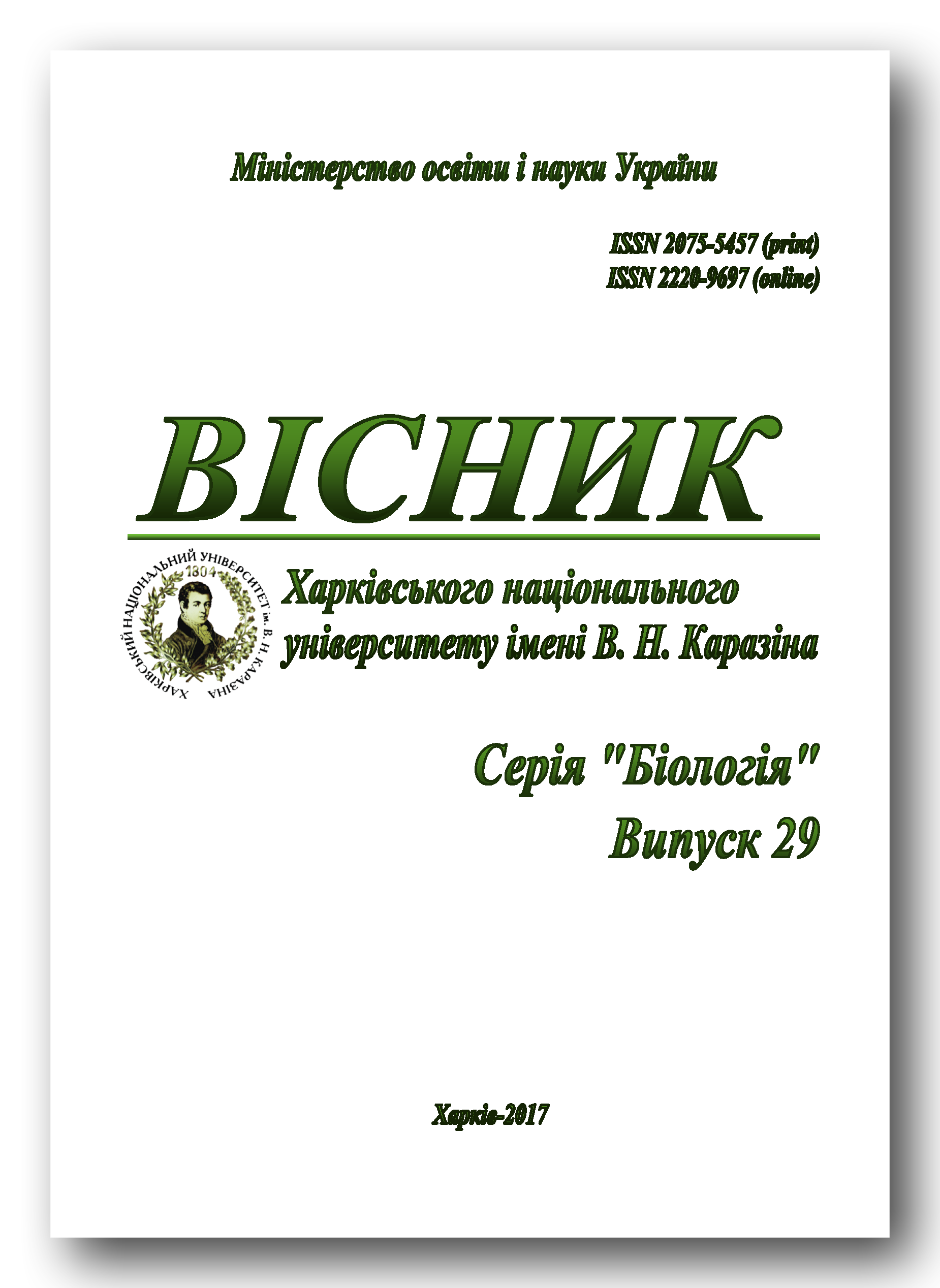Aspects of winter communal roosts of Corvus species in Poltava city
Abstract
Winter communal roosting gatherings of Corvus species were surveyed in Poltava city in 2015–2017. The results of observations on the formation, existence, redistribution and disappearance of common communal roosts of grey crows (C. cornix L., 1758), rooks (C. frugilegus L., 1758) and jackdaws (C. monedula L., 1758) are presented in the project. Three winter roosts have now been identified: Grishki Forest, Pushkarivskyi Forest and Kondratiuka, as well as a network of permanent gathering sites and temporary night-time pre-roosting gathering sites. The short-period Pushkarivskyi Forest roost functioned for several months in the winter of 2015–2016; the other two roosts existed during both seasons of the study. Every location was characterized by features of the species composition and individual lines of formation and decay. The main pre-roosting migratory paths of the species under discussion have been mapped. The principles of time and spatial redistribution of birds during roosts over two winter periods have been revealed. The total number of corvids was 80 000 individuals in 2016–2017 (50 thousand for Kondratiuk roost and 30 thousand for Pushkarivskyi Forest roost). We suggested and provided a new method of counting birds in gatherings, which was approved during our researches and may be used for calculating mass gathering of birds of any nature.
Downloads
Authors retain copyright of their work and grant the journal the right of its first publication under the terms of the Creative Commons Attribution License 4.0 International (CC BY 4.0), that allows others to share the work with an acknowledgement of the work's authorship.




